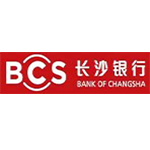PSBC(01658)
Search documents
邮储银行青岛分行发放青岛市首笔“交易鉴证贷”
Zhong Guo Jin Rong Xin Xi Wang· 2025-12-11 06:03
转自:新华财经 编辑:赵鼎 近日,邮储银行青岛分行凭借青岛市农村产权流转交易平台出具的交易鉴证书,为即墨区杨家村某市场 租赁方成功发放25万元贷款。该笔贷款是青岛市首笔"交易鉴证贷"业务,为破解农村经营主体融资难 题、为乡村振兴注入金融活水提供了有力支撑。 为确保"交易鉴证贷"高效落地,邮储银行青岛分行建立了专属服务流程。在风险把控方面,该行依托青 岛市农村产权流转交易平台对农村产权交易主体进场规范交易开展合规性鉴证,为贷款项目筑牢信用基 础;在审批放款方面,结合农村产权流转金额及经营主体实际融资需求,大幅简化审批环节、压缩办理 时限,实现了金融服务与产权交易的无缝衔接,让经营主体享受到"便捷、高效、低成本"的金融服务。 下一步,邮储银行青岛分行将持续深化与青岛市农村产权流转交易平台的合作,不断延伸金融服务链 条,积极探索构建"产权交易+交易鉴证+融资担保"于一体的综合服务体系。同时,加大产品迭代和服 务创新力度,推动更多适配农村产权场景的金融产品落地,让金融活水更精准、更高效地流入农业农村 领域,为青岛市构建多元化农村金融服务体系、全面推进乡村振兴贡献更多力量。(蒋芳) 作为深耕"三农"金融服务的主力军,邮 ...
大连文体旅产业“烟火升腾”!“金融+体育”深度融合释放乘数效应
Xin Lang Cai Jing· 2025-12-10 13:56
真 / 知 / 引 / 导 / 生 / 活 | 大连新闻传媒集团记者邵海峰 | 近日,浦发银行首家足球生态主题支行——大连梭鱼湾支行正式开门迎客,这也是大连首家足球生态主题银行,标志着大连,这座有着浓厚足球和体育氛 围的城市,正以"金融+体育"的深度融合模式,奏响体育经济高质量发展和城市文体旅融合的新乐章。 金融力量,如涓涓细流渗透到体育产业的每一个脉络,成为撬动城市消费升级、提升城市品牌影响力的新引擎。 媒集团记者邵海峰 摄 梭鱼湾足球场中超比赛场景。大连新闻传 $$\Leftrightarrow\exists i,j,l$$ 让"足球城"金字招牌 愈发闪亮 足球是大连鲜明的城市标签。 "足球是镌刻在大连这座城市基因里的荣耀,支持大连足球就是支持城市的未来。"我市一位金融业人士表示。 浦发银行首家足球生态主题支行——大连梭鱼湾支行的正式营业,是浦发银行大连分行深化"金融+体育"战略的关键举措。该支行不仅承接了原大连甘井 子浦发村镇银行的全部业务,更力求打破传统银行服务边界,打造集金融服务、球迷体验、产业链支持于一体的特色服务体系。 浦发银行大连分行与大连英博足球俱乐部的战略合作正在持续深化。双方将共同推出联 ...
杨西琳,出任邮储银行党委委员
Zhong Guo Ji Jin Bao· 2025-12-10 12:25
Group 1 - Yang Xilin has publicly appeared as a member of the Party Committee of Postal Savings Bank, indicating an expansion of the bank's executive team [1] - Yang has extensive experience within the Postal Savings Bank system, previously serving as the General Manager of the Financial Interbank Department, and has solid regional management experience [1] - The establishment of a Financial Market Business Director position reflects the bank's intention to strengthen its development in financial markets and asset management [1] Group 2 - Postal Savings Bank is continuously promoting balanced development in retail and corporate financial businesses [2] - As of the end of Q3 2025, the bank's total assets reached approximately 18.61 trillion yuan, an increase of 8.90% from the previous year, with total customer loans amounting to about 9.62 trillion yuan, up 8.33% [2] - The bank achieved an operating income of 265.08 billion yuan in the first three quarters, a year-on-year increase of 1.82%, and a net profit of 76.79 billion yuan, up 1.07% [2] Group 3 - The non-interest net income for the first three quarters was 31.48 billion yuan, an increase of 6.79 billion yuan, representing a growth rate of 27.52% [3] - The increase in non-interest income is attributed to enhanced market analysis and increased trading of bonds and bills, leading to higher trading margin profits [3] - The current senior management team of the bank consists of seven members, including the Executive Director and President Liu Jianjun and several Vice Presidents [3]
杨西琳,出任邮储银行党委委员
中国基金报· 2025-12-10 12:20
【导读】杨西琳以邮储银行党委委员身份公开亮相,曾任金融同业部总经理 中国基金报记者 马嘉昕 邮储银行副行长、董事会秘书杜春野表示,公司金融是该行推进均衡战略的重要一环,是为邮储银行投资者进一步提升价值创造的重要抓 手。 从财报来看,邮储银行的对公业务发展也颇为强劲。截至2025年三季度末,邮储银行总资产规模约为18.61万亿元,较上年末增长 8.90%。其中,客户贷款总额约为9.62万亿元,较上年末增长8.33%;个人贷款总额约为4.86万亿元,较上年末增长1.90%。 12月10日,记者从相关渠道获悉,杨西琳以邮储银行党委委员身份公开亮相。这意味着,邮储银行的高管团队进一步"扩容"。 据悉,在2025年邮储数字金融大会暨手机银行11.0发布会现场,邮储银行副行长牛新庄在介绍出席来宾时对杨西琳的职务表述为该行党委 委员。 从过往履历来看,杨西琳在邮储银行体系内深耕多年,此前曾担任邮储银行金融同业部总经理,长期主导金融同业业务,具备扎实的区域 管理经验。 2025年1月,据"中国银协"微信公众号披露,杨西琳曾以新当选的第四届票委会主任单位邮储银行金融同业部总经理的身份发言。 公开资料显示,2010年3月,杨西琳 ...
探寻利率方向(4):从M2看2026年债市流动性
GF SECURITIES· 2025-12-10 11:48
Investment Rating - The report assigns a "Buy" rating for the banking sector, indicating an expectation that stock prices will outperform the market by more than 10% over the next 12 months [40]. Core Insights - The growth of M2 is primarily driven by government and corporate leverage, with government leverage's contribution increasing from 23.9% in 2015 to 45.5% in 2025, while corporate leverage is expected to contribute 63.6% to M2 growth in 2025 [5][14]. - The report highlights a divergence between the social financing (社融) and M2 growth rates, indicating a liquidity accumulation in the financial system when the demand for financing from the real economy is insufficient, which can lead to a decline in bond yields [5][19]. - The expected social financing-M2 differential for 2026 is projected to be 0.56%, with a quarter-on-quarter increase of 33 basis points [32]. Summary by Sections M2 and Liquidity Analysis - M2 includes cash, personal deposits, corporate deposits, non-bank deposits, and deposits from non-deposit financial institutions. The main contributors to M2 growth are government and corporate leverage [5][13]. - The report discusses the relationship between the social financing-M2 differential and bond market performance, noting a shift in correlation since the second half of 2022 [5][19]. Social Financing Projections - For 2026, the report forecasts a total of 16.3 trillion yuan in new loans under the social financing framework, with a growth rate of 8.11% [32][34]. - The report anticipates that the net issuance of government bonds will reach 14.8 trillion yuan in 2026, with a focus on maintaining a proactive fiscal policy [34]. M2 Growth Forecast - The M2 growth rate for 2026 is projected at 7.55%, influenced by factors such as net fiscal deposits, the strengthening of the equity market, and cross-border capital flows [32][36].
邮储银行12月9日获融资买入9390.95万元,融资余额10.78亿元
Xin Lang Cai Jing· 2025-12-10 05:49
来源:新浪证券-红岸工作室 12月9日,邮储银行跌0.54%,成交额7.25亿元。两融数据显示,当日邮储银行获融资买入额9390.95万 元,融资偿还7773.85万元,融资净买入1617.10万元。截至12月9日,邮储银行融资融券余额合计10.83 亿元。 截至9月30日,邮储银行股东户数14.26万,较上期减少13.09%;人均流通股478570股,较上期增加 15.29%。2025年1月-9月,邮储银行实现营业收入2650.80亿元,同比增长1.82%;归母净利润765.62亿 元,同比增长0.98%。 分红方面,邮储银行A股上市后累计派现1377.96亿元。近三年,累计派现773.95亿元。 机构持仓方面,截止2025年9月30日,邮储银行十大流通股东中,香港中央结算有限公司位居第六大流 通股东,持股5.20亿股,相比上期减少4.22亿股。华夏上证50ETF(510050)位居第七大流通股东,持 股2.11亿股,相比上期减少554.09万股。华泰柏瑞沪深300ETF(510300)位居第八大流通股东,持股 1.88亿股,相比上期减少918.03万股。易方达沪深300ETF(510310)位居第九大流通 ...
邮储银行濮阳市分行:专项产品精准助农
Huan Qiu Wang· 2025-12-10 03:34
据介绍,"豫农担-救灾贷"是河南省财政厅联合省农业农村厅正式批复的专项担保业务,核心亮点在 于"零担保费+财政贴息"的双重红利——不仅免收受灾主体的贷款担保费,还给予年化1%的财政贴息支 持,像张先生这样的贷款规模,一年就能减少3000余元的融资成本。这项政策通过财政与金融协同发 力,为受灾农业经营主体筑起了一道"金融防护墙"。 "感谢邮储银行和省农担公司的支持,2天时间就帮我解决了大问题,真是雪中送炭。"近日,河南省濮 阳县习城乡于林村的张先生,在收到30万元"救灾贷"资金后,难掩激动之情。 作为当地小有名气的农业经营主体,张先生流转土地近800亩,长期专注小麦与玉米种植,是周边农户 眼中的"田秀才"。然而今年秋收季,持续的异常天气造成作物大面积减产,不仅收成大打折扣,还直接 影响了下一季的播种资金筹备,让这位"田秀才"犯了难。 在此期间,邮储银行濮阳县支行客户经理了解到他的资金困境,主动上门服务,结合张先生的受损情况 和经营需求,量身推荐了专为受灾农业主体定制的"豫农担-救灾贷",从资料收集、手续办理到最终放 款,全程仅用2个工作日,30万元资金便顺利到账。 来源:环球网 政策落地的速度,源于金融机构的主 ...
邮储银行增设业务总监 杨西琳履新党委委员并兼任该职
Xin Lang Cai Jing· 2025-12-10 02:50
记者获悉,原邮储银行金融同业部总经理杨西琳已任邮储银行党委委员。此外,杨西琳或将出任邮储银 行金融市场业务总监,负责金融业务条线,包括金融市场、金融同业及资管业务。值得注意的是,此前 邮储银行并未设置金融市场业务总监岗位,仅设零售业务总监一职。目前,邮储银行零售业务总监由梁 世栋担任,为邮储银行七位高管之一。公开资料显示,2010年3月,杨西琳获批担任邮储银行深圳分行 副行长。在出任邮储银行金融市场业务总监前,杨西琳担任金融同业部总经理。(21世纪经济报道) ...
六大行2025年中期分红派息情况
Zhong Guo Zheng Quan Bao· 2025-12-09 20:22
数据来源/上市银行公告 制表/石诗语 银行名称 分红派息总额 派发A股现金红利金额 A股现金红利发放日 (亿元) (亿元) 工商银行 503.96 381.23 2025年12月15日 建设银行 486.05 39.36 2025年12月11日 农业银行 418.23 381.5 2025年12月15日 中国银行 352.50 261.02 2025年12月11日 邮储银行 147.72 未披露 未披露 交通银行 138.11 未披露 未披露 ...
2025年国家开发银行





Shang Hai Zheng Quan Bao· 2025-12-09 18:53
Core Insights - The awards for financial bond underwriting and market-making have been announced, recognizing various banks and securities firms for their outstanding performance in the industry [1][2][3][4][5][6][7] Group 1: Outstanding Underwriters - The title of "Outstanding Underwriter" was awarded to several banks, including CITIC Bank, Shanghai Pudong Development Bank, and Industrial and Commercial Bank of China [1][2] - A total of 10 banks were recognized as "Excellent Underwriters," highlighting their contributions to the financial bond market [1] Group 2: Excellent Market Makers - The "Excellent Market Maker" category included firms such as Huatai Securities and CITIC Securities, showcasing their role in enhancing market liquidity [2][4] - A diverse range of banks, including Ping An Bank and Industrial Bank, were acknowledged for their market-making capabilities [2][4] Group 3: Special Awards - Special awards were given for various categories, including "Debt Sea Rising Award" and "Green Low Carbon Award," recognizing banks like Agricultural Bank of China and Postal Savings Bank of China for their innovative approaches [3] - The "Technology Innovation Award" was awarded to banks that demonstrated significant advancements in financial technology [3] Group 4: Individual Recognitions - Individual awards were presented to key personnel from various banks, such as CITIC Bank's Sun Wei and China Everbright Bank's Liu Yan, acknowledging their leadership in driving financial bond initiatives [4][5] - The "Outstanding Underwriting Supervisor" category highlighted individuals from major banks, emphasizing the importance of leadership in underwriting processes [5]

